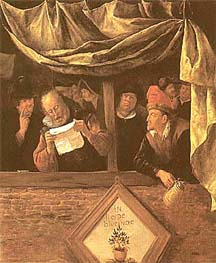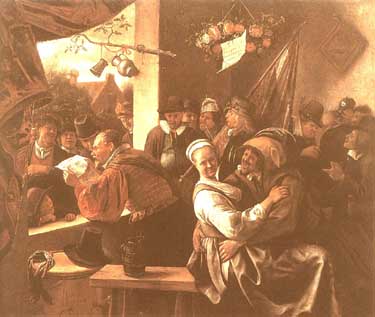
Public Functions
The earliest Chambers were closely associated with the church. Many of the societies had priests on their membership rolls. The Chambers assisted with the observance of religious festivals. The societies' creative artists added lustre to processions and performed religious plays.
| Cities often rewarded talented and co-operative Chambers with financial subsides and privileges such as exemption from certain taxes. Active civic support added even more glamour to membership in a Chamber for upwardly mobile urbanites. |  |
Mutually beneficial financial arrangements between Chamber and city helped strengthen the secular orientation of the Rederijkers in opposition to their gradually weakening ties to their religious roots.
Copyright
© 1997 Kelly S. Taylor
